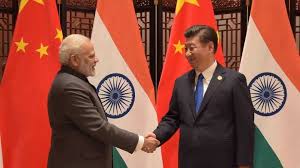Important Tribal personalities of MP contributing in Indian National struggle-भारतीय राष्ट्रीय संघर्ष में योगदान देने वाले मप्र के महत्वपूर्ण आदिवासी व्यक्तित्व
Rani Avantibai
Rani Avantibai was born on 16 August 1831 in the house of Jagirdar Rao Jujhar Singh Lodhi of Mankedi village in Seoni district.
Avantibai was married at the age of 17 to Vikramaditya Singh, son of King Laxman of Ramgarh. Rani had two sons ‘Aman Singh and Sher Singh’.
The first woman to be martyred in the revolution of 1857 AD. Her special friend Girdhari Bai.
War- With the British in the forest of Deohargarh in 1858 AD. His mausoleum is in Balpur, Dindori district.
Shankar Shah(MPPSC-Exam)
Shankar Shah was the king of Garha Kingdom,at Gondwana. He led the 1857 uprising against the British in Jubbulpore , and was put to death along with his son.
His son's name was Kunwar Raghunath Shah.
Raghunath Shah-
If there is talk of independence and if Mahakoshal's brave king Shankar Shah Shah and his son Raghunath Shah Raghunath Shah Shah Shah, then this story remains incomplete .
The Gond state spread in the Mahakaushal region of present-day Madhya Pradesh was a prosperous state at that time. Raja Shankar Shah's father's name was King Sumer Singh was imprisoned in Sagar Fort after beingcaptured by the Marathas,
During this period, in 1800, the Marathas freed Sumer Singh from captivity .
Shankar Shah started attacking Maratha soldiers through guerrilla warfare.
Fearing father and son, the British conspired to kill Shankar Shah and Raghunath Shah to suppress their voice and a local king who was their foster father gave information to the British about Shankar Shah and Raghunath Shah.
The British arrested Gond kings in 1857, they tied the father and son in front of a cannon and blew them up in front of the Jabalpur Commissionerate in a packed market.
Shankar Shah and Raghunath Shah gave their martyrdom, but did not kneel before the British. Statues of both Shankar Shah and Raghunath Shah were established in their memory
Sacrifice Day is celebrated on 18 September-
After the martyrdom in 1857, rebellion against the British started in the entire Gondwana Empire. The sacrifice of Shankar and Raghunath Shah gave birth to a spark in the minds of the people against the British, which later became a flame. Since then, every year on 18 September this day is celebrated as Sacrifice Day.
Khajya Nayak-
Birth- Sangli, belonging to Bhil tribe.
Khajya Nayak's father Guman Nayak was the warden of Sendhwa. After his death in 1833 AD, Khajya Nayak was made the Nayak of Sendhwa Ghat.
Khajya Nayak initially supported Captain Garis against the rebellious Bhils.
Khajya was sentenced to 10 years imprisonment for killing a British officer while serving as a watchman, but was released after 5 years due to good conduct.
Khajya Nayak was killed by British officer James Outram in the battle of Ambappani on 11 April 1858. Khajya's son Daulat Singh was also martyred in this war.
April 11 is celebrated as Khajya Nayak Day by the Madhya Pradesh government.
Tantya Bhil
Real name ‘Tantiya Bhil’. He was born in 1842 AD in Virigaon of Khargone. At the time of the first freedom struggle in 1857 AD, Tantya was also 15 years old. Since childhood, Tantya was a patriotic, strong and fighting personality. Famous in guerrilla warfare.
He was just, peace-loving, simple, easy-going and intolerant of injustice. He was called 'Robinhood of India'. His residence was Patalpani,
Samadhi- Indore and hanging- Jabalpur on 04 December, 1889.
Indian forest dwellers used to call Tantya as 'Mama'.
Ganjan Singh Korku-
In 1930 AD, tribals did Satyagraha in Ghoda-Dongri Betul area. Which was led by Ganjan Singh Korku and his associate Vishnu Singh.
Ganjan Singh Korku was influenced by the Salt Satyagraha launched by Gandhiji and his call for non-payment of taxes.
Ganjan Singh Korku had launched Jungle Satyagraha and Hill Satyagraha with a stick in his hand with the tribal community of Ghoda Dongri area Betul.
Badal Bhoe-
Shri Badal Bhoi was a revolutionary tribal leader of the district. He was born in Dungria Titra village of Parasia tehsil in 1845. Under his leadership thousands of tribals were demonstrated at collectors bunglow in 1923, held Lathi charge and he was arrested.
He participated in Civil Disobedience movement in 1930 ,was arrested by English Ruler for breaking the Forest rule at Ramakona (under the leadership of Shri Vishnath Damodhar) and sent to Chanda jail. He left his last breath in jail in 1940 after the english ruler given poison to him
The Tribal Museum started in Chhindwara has been changed to “Shri Badal Bhoi State Tribal Museum”. Shri Badal Bhoi was a revolutionary tribal leader of the district..
Pema Falya.
Bhima Nayak -Nimad's Robin Hood.
Bhima Nayak was Bheel tribal leader from Barwane (MP),he fought against the British in the Indian Rebellion of 1857. Nayak met Tantia Tope at the time of revolt.
Bhima Nayak led the 'Tir Kaman Battalion' and defeated the British in the 'Battle of Ambapani'.
On 02 April 1867, Bhima Nayak was caught by British soldiers while sleeping in a hut in the dense forest of Satpura and taken prisoner.
When Bhima was convicted by the British government, he was kept in Port Blair and Nicobar.
A government irrigation scheme, "Shaheed Bhima Nayak Pariyojna" in Madhya Pradesh is named after him.
Sipahi Bahadur Sarkar
Was the parallal government established at Sehore during 1857 at Sehore's Saikdakhedi on January 14, 1858.
Known as Jalianwala Bagh of Madhya Pradesh, at Saikdakhedi, the commander of the British Central India Field Force, General Hugh Rose, and his men reportedly killed 149 of 356 rebel sepoys of the Bhopal Contingent Force — a collision force of Bhopal nawabs and the British.
The state government has announced to build a grand memorial on the lines of Jaliawala Bagh.
Jhalkari Bai-
Born near Jhansi, Jhalkari Bai grew up to become a soldier and one of Rani Lakshmibai’s trusted advisors.
She learnt horse riding and the art of weaponry at a very young age.
Her acts of bravery landed her career as a low-ranking soldier in Queen Lakshmibai of Jhansi’s army. However, she quickly rose to be one of the Queen’s trusted advisors. She also earned herself a position in Rani Lakshmi
Her women’s army called the Durga Dal and often made important decisions on behalf of the queen.
At the height of the battle, she disguised herself as the queen, risking her life for her, fighting in place of her and allowing the queen herself to discreetly exit out of harm’s way.
Many Dalit communities of the region look up to her as an incarnation of God and also celebrate Jhalkaribai Jayanti every year in her honour.
Sangram Shah-
Raja Sangram Shah Madavi was a king of the Garha Kingdom of Gondwana, in the state of Madhya Pradesh, India. Raja Sangram Shah, who belonged to the Gond Dynasty in central India, was the 48th and most well known ruler of the dynasty,[1][2] and during his reign he had conquered 52 forts to strengthen his kingdom. The Chouragarh Fort in Narsinghpur was built in his honour for conquering 52 forts.
His eldest son, raja Dalpat Shah Madavi, married Rani Durgavati.
Dhir Singh-
He was born in 1820 AD in 'Kushvahatola' of Rewa district. Belonged to Gond tribe. Supported Bhima Nayak in the revolution of 1857 AD.



.jpg)
.jpg)
.jpg)
.jpg)
.jpg)
.jpg)


.jpg)


